Liz Shine's Blog
November 20, 2025
Make Time Like a Rebel, 2026 Edition
It’s a new moon today, and we’re in the last days of the eleventh month of 2025. A good time to stir up some dreams designed for you.
Directions: This is a workbook designed to get you ready for the rebellion that is you pursuing your creative dreams. Here is a link to a Google Doc version of this workbook. Simply file/make a copy of this document, and you can easily customize it to fit your needs. Or simply copy/paste the content of this post to print, adding space for you to write where you need to and print.
Introduction: Why “like a rebel”? Because the world we live in is not supportive of the creative work we are aspiring to do. To make time with the limited time and energy we’ve got left (after day jobs, children, pets, housework, and all the demands that come along with keeping a household), rebellion is necessary. I’m a writer. For the most part, the rebellious work I am doing is writing. And I’m doing it just about every day. If you’ve read my posts over at Make Time, you’re privy to some of the ways I magic that into my life. Whatever creative practice you are aspiring to do, this is a place to plan how you will make that happen in 2025. For me, this means mostly writing. But I also aspire (less successfully) to someday be able to play at least a couple of songs on guitar and make more collages. I like to spend as much time as possible in the kitchen, making a delicious meal that takes time. Maybe you want to make time for dancing, for practicing your singing, for writing poetry, for putting together a cookbook for the world, or just for you and your family. Maybe you want to learn carpentry, calligraphy, or crocheting.
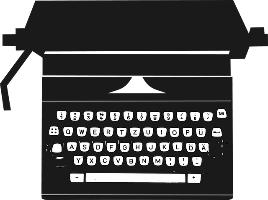
Making time for creative work is the best investment you can make this year. It’s an investment in self-expression, joy, and peace of mind. If you did this planning workbook with me last year, I’ve changed some things up to focus more on this year’s theme of rebellion.
Directions: In truth, this workbook is not just about planning your creative life, because–let’s face it—it’s all interconnected. If you stay rested, hydrated, and physically active, you are going to show up to the “page” more consistently and with a clearer, more focused mind. The focus of this worksheet is to break down your goals. In order to do that, we will reach into all parts of your life and help you plan out your creative journey for the coming year. Work through each section of this packet at your own pace. Single-focus on the task of planning and reflection. If that becomes impossible, take a break and finish later. Get comfortable. Brew some tea, set out some snacks, put on some relaxing music. Take this time for yourself. Set everything else aside. If meditating is your thing (or you wish it were), do a short meditation before you begin. Make time for this, too. Maybe only do the parts you feel you need.
Rage Cleaning
Rage cleaning is a phrase passed easily between me and my best friend. No explanation is needed when one or the other of us says this phrase. It is understood by us that this means we have fallen into self-sabotage and prioritized the dishes or other people’s problems to our own detriment, and it has reached a point where we literally have to rearrange the furniture and gather some bags for donation to get back on track. So, let’s take a look at the furniture, see what might work better, and gather some things to get rid of. Below, make a list of the things that get in the way of your creative time. List as many things as you can.
Now that you’ve got your list, look for anything that you can simply eliminate. I know that it won’t be as easy as crossing an item off a list, but a good place to start is recognizing what you can let go of that is getting in the way of your work. Okay, get started crossing out.
What should be left now is a list of things that get in the way and must stay. You love them too, or you need them. There is no getting rid of them. This is where you try to rearrange the furniture. Let’s say your day job is on that list. Are there ways you can tighten down that commitment? For me, this means no work email on my phone, trying to hold to my contracted work time, making efficient use of my time while at work, and trusting the universe that the work will eventually get done. This last one is big for me, because I have a tendency to get stuck in busy mode, caught up in the delusion that work ever really gets done. When you look at your furniture, what can be rearranged? Draw some lines and arrows. Make a list of ideas.
Now, stand back and consider your list.
Breaking Down Your Goals
Directions:Write at least three goals for the year, but feel free to focus on only one for now.
GOAL 1:
Why this goal?
How will you feel when you achieve it? Take some time to describe and visualize yourself being in that moment already and write down what you see/think/feel.
GOAL 2:
Why this goal?
How will you feel when you achieve it? Take some time to describe and visualize yourself being in that moment already and write down what you see/think/feel.
GOAL 3:
Why this goal?
How will you feel when you achieve it? Take some time to describe and visualize yourself being in that moment already and write down what you see/think/feel.
Breaking Down Habits
Directions: Fill in the chart below with the daily habits that are tried and true (or that you suspect will be). You may not always do these things every day, but you’d like to. Be specific and list as many as you can.
Body.
What are the things that you would like to do every day to keep your physical body happy and healthy?
Mind.
What are the things that you would like to do every day to keep your mind happy and healthy?
Creative Routine.
What are the things that you would like to do every day to keep you moving forward with your goals?
Your Ideal Creative Week
Directions: Plan out your ideal creative week. Of course, there will be times when life gets in the way, that’s how life goes. Let that go and imagine anyway.
Sunday
Monday
Tuesday
Wednesday
Thursday
Friday
Saturday
Action Steps
Directions: What are ten action steps you can commit to take to make your creative goals happen?
1.
2.
3.
4.
5.
6.
7.
8.
9.
10.
Reflect on how you’ll feel when these things happen, and how you think your life might be different. Fill the space that takes up the rest of this page.
Vision Board
Directions: Use cardstock or this Google slide template to collage images, words, phrases, or quotes that represent the achievement of your creative goals for 2025. Insert a picture of your board here, or a link to your slide. If you’re using Google Slides, simply file/make a copy to edit for yourself. Consider doing this low-tech with a good old piece of large cardstock and a stack of magazines. Disregard all the baggage you have about vision boards and do it anyway. The real power of a vision board is the time you spend making it, the time you spend concentrating on what you want your writing year to look like.
Letter To Your Future Self
Directions: Write a letter to yourself via this email service and have it arrive three months into the new year. In the letter, remind yourself of your goals and give yourself a pep talk as well as any reminders you might need to keep going.
Write Your Creative Manifesto
A manifesto is a public statement of your values, beliefs, or intentions. Once you write yours, consider sharing it to at least one other person. Aim for at least one page double-spaced. Not sure how to begin? Consider some of the following starts:
Begin with “I believe”.Ask a provocative question.Identify what has been getting in the way of your making time for your creative goals. Then proceed with the manifesto for change.Make a bold declaration.Start with an inspiring quote.Start with a vision of the future.Challenge the way things are.Creative Friend,
This is how dreams get built: by making time, like you just did. Pull out your three creative goals and put them somewhere where you can review them from time to time over the course of the year. Share them with at least three friends who you can depend on for their support and encouragement. Consider asking at least one of those friends to be your accountability partner this year. Make a plan for how and when you will check in with each other.
I’m here doing this work with you, sending out good thoughts to you. If you have any questions, comments, or suggestions about this exercise, feel free to email me at eatyourwords.lizshine@gmail.com.
I also work as a writing coach and love helping writers gain confidence, set goals, and develop their work. I was a writer first, but I’ve been teaching for over twenty-five years. Coaching weaves those two skill sets in a way that I love, love, love. I work with writers locally and over Zoom. For more information on coaching, email me at eatyourwords.lizshine@gmail.com or see my website.
You can see my books here and read some of my short works here.
Looking for any of the books I’ve mentioned here? Order through my Bookshop.org affiliate page to support me and my local bookstore!
October 16, 2025
Beyond Striving
I’m back to school, and so also back to finding time around the edges and in found scraps during the work week and on weekends. My pomodoro timer helps. Getting up before the sun is key. Tight boundaries around home and work are essential. I’m grateful for noise-cancelling headphones and the little coffee shop just a couple of blocks away.
Progress is slow this season, but as the sign at a gym I used to frequent said: Slow progress is still progress. It’s easy to get all glum over the perceptions we have of our progress, as I have been lately. I picked up a copy of The 12 Week Year For Writers, which is helping me break my goals intosmaller milestones and to identify habits that get the writing done.
Still, I keep such goal-oriented work in proper regard. That sort of work is pointless to me without the more critical practice of cultivating joy through mindfulness, connection, and building habits that nurture the body and spirit.
Walks do this sort of nurturing, which is why I walk everywhere I can. I gather images, breathe fresh air, and sometimes find unplanned side quests to complete. Like last Friday I walked home in the rain, exhausted from a particularly challenging work week, and for the second time that week hit the closed sidewalk around the site of the new Fast Chicken Shack I am not thrilled about. Grrrr. I steamed and walked around the monstrosity everyone seems so excited about,ranting the whole time about factory farming and corporate this and that. A message came in from my sister saying she was running late. We were meeting to work on some new ideas for the editing and book design business we collaborate on. With this extra time, I decided to dip into Half Priced Books. I emerged forty minutes later with sixty-five dollars in books packed in a reusable bag with the words Fiction Addiction in bold, brassy letters. That time spent sitting on the floor so I could see all the books on the bottom shelf at HPB was just the thing I needed. It’s been the thing as long as I’ve been able to go out into the world on my own. It’s a meditation of sorts I learned early on. To sit on the carpet of libraries and bookstores reading little bits of books, sometimes falling so in love with them, I have to bring them home.
So, walking. And sleep too, though this one I have rebelled against for years. I wake early to write, but this hasn’t always meant going to bed early. Too many times, I’ve stayed up until 10 or 10:30 and still set my alarm for 4:00. The long-term effect of this is not just burnout. Sleep contributes to physical well-being and, ultimately, longevity. Twice this past week I had book group meetings that kept me up pastmy 8 o’clock bedtime. I did not get up to write those days, and whereas in a less secure time of my life I might have beaten myself up over that, now I consider it a win.
I’ve spent too long rigidly clinging to the habits of writing, focusing on word counts instead of time on task, berating myself for “failing” to show up at the scheduled time.
Why?
Because writing is vital to my being, and I didn’t yet trust myself to come back to the page. Now, I believe in myself as a writer, even when a week goes by and I haven’t written at all. So, you haven’t written. Why add more misery by making up a whole story about failure instead of just getting up to write at the next opportunity?
Mindfulness practices support the writing by making me less susceptible to the dramatic narratives that we build around our own worth (mostly our lack of worth, because of our brain’s negative bias). We read a brilliant book and think, I could never do that. We write a boring scene and think, I’m a terrible writer, wasting everyone’s time. I should hang up my hat. Many years of practice and a continued commitment to mindfulness have provided some armor against these nonsense attacks. A good starter on mindfulness is the classic Wherever You Go, There You Are by Jon Kabat-Zinn. It’s full of bite-sized mindful meditations. It’s a good one to read and re-read. Getting started is also as simple as pausing to breathe and just be in moments throughout the day and also more. It’s not something to be mastered or achieved. It’s more like an apple a day, every day, because your mind will do its human thing. It’s supposed to.
I’ve been in a writer’s group almost without pause since I was nineteen. Though there have been groups that were more hurt than help a few times, in the big picture those groups have kept curiosity and compassion at the heart of my work. Showing up for your group, even when you have no pages to show that week, is an act of devotion that pulls you through to the next time you sit to write. You go to those groups to get feedback, sure. But you also go to be in communion with other writers, to share your stories and ideas and hear theirs. You go to discuss all kinds of questions of craft in more depth and get stronger in your understanding of how your chosen form can work and not work.
As has become all too clear in the past couple of years, we are not robots whose singular aim is productivity. We are flawed and vulnerable humans producing art we hope other humans will connect to, be moved by. To do that work we must not just strive. We must stroll and sleep and surrender to needing what humans need. We must be fierce and full of grace.
August 7, 2025
Literary New England VII: The End, Salem to Boston
It did not take long to figure out that Salem is a haven for tourists. When we pulled into town and passed a huge graveyard to the left, the cab in front of us advertised their company: Witch City Cab. The historic district bustled with energy: novelty shops, bars, and restaurants on nearly every block. We made our way to The House of Seven Gables just in time for the five o’clock tour.

Though the tour was not exclusively about Hawthorne, we did learn that the most recent owner did renovate to make the space more responsive to Hawthorne’s novel. She even added a secret passageway—that never appears in the novel—in response to a character who keeps mysteriously popping up in places he isn’t expected.
Though the house came from money earned through trade (and functioned on the backs of slaves), eventually it fell into the hands of Caroline Emmerton who turned it into a museum and uses the money the attraction earns to fund a non-profit that provides ESL lessons and citizenship classes to immigrants.
Hawthorne never lived here. So, how did he know the house?
His cousin’s family owned it for a time, and she told him loads of stories about the house over the years. Hawthorne’s birth home is on the museum property, though. It was moved there from a few blacks away, and thereby saved from demolition.
Hawthorne preferred morning writing, in solitude. He wrote slowly, embracing research and time for ideas to become fully realized before getting down to work. He used fiction to explore psychology and morality, and his treatment of symbolism inspired his friend Melville when writing Moby-Dick.
Hawthorne, so embarrassed by the legacy of his family (prosecutors in the Salem Witch Trials) added the ‘w’ to his family name.
The witches of Salem consist of a huge part of the tourist industry here in Salem. There are dozens of witchy shops. On the way to the Salem Witch Memorial you can have a friend snap a photo of you in stocks. It’s hard to know how to feel walking around this amusement park of the exploits and horrors of colonialism and religious zeal.
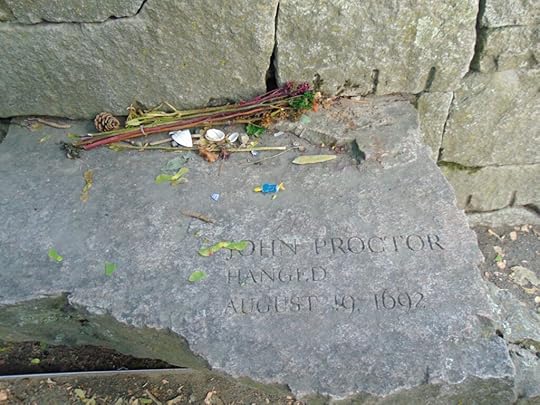
The drive to Boston for our very last day of chasing writers and bookstores all over New England was short yet hectic. (Turn left! Stay in right lane!) The chaos solidified our plan to park the car in a garage and take the T to our destinations.
We started in Cambridge and went to The Harvard Bookstore (great used book selection!) and to the birthplace of E.E. Cummings at 104 Irving St. After returning home to the Northwest, we realized we’d missed a chance here to connect with Margaret Fuller, perhaps the most badass of all the Transcendentalists, and even the inspiration for Hawthorne’s Hester Prynne.
If you know Cummings, you know he broke the rules off form, punctuation, and typography. He wrote in the mornings, following a steady routine. He drafted on a manual typewriter. He shunned convention in his poetry and in his life. He was also a painter. The first poem of his I fell in love with was “since feeling is first.” I was somewhere in my late teens at the time. Like Auden, Bishop, and Whitman, that first poem left me smitten. I read his work over and over again, as if reading and re-reading aloud could crack the walls in my that blocked my own poetic expression.
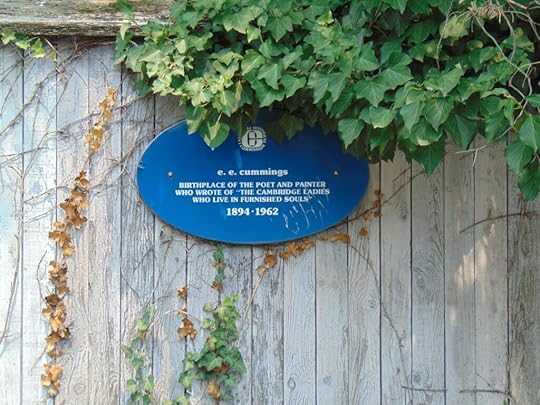
We hopped on the train and continued on to three destinations, all near Boston Common: a Poe statue outside a Starbucks on Boylston, Brattle Book Shop, and the apartment Sylvia Plath lived in on Beacon Hill for a time. The Brattle Book Shop is an all used-bookstore with three floors full of books, plus a stunning outdoor discount section (pictured).

Poe wrote at night and focused on producing a single emotional effect, which explains why he stuck to shorter forms. Plath woke up early in the morning to get several hours of writing time in before her children woke. She was a scholar and perfectionist, known for her confessionalism and emotional intensity.
We drove all over New England, looking for writers. Everywhere, we found shrines to them. Though we teach literature and History as separate subjects, the truth is more complicated. Writers then and now are alchemizing events and notions of their time, turning them into art public consideration and discourse.
I also work as a writing coach and love helping writers gain confidence, set goals, and develop their work. For more information on coaching, email me at eatyourwords.lizshine@gmail.com.
Literary New England VI: Franconia, Bennington, Amherst
We were headed to Franconia and craving a second cup of coffee, but didn’t want to settle for just anything. We wanted a local place with a local roast, the kind of thing you can’t go a mile in the PNW without running into. We saw dozens of dispensaries and passed three Dunkin Donuts, but no indie coffee shop. I said to Chris, let’s hold on; there’s going to be a White Mountain Coffee coming up any minute. A fair guess for the name of the coffee of my imagination, since we were driving through the white mountains at the time. It was 2:30 by the time we caved and pulled into the fourth Dunkin we had passed. Within one hundred feet of pulling back onto the road, what did we see? White Mountain Cafe. There’s a lesson in this, I’m sure.

This is the view from the porch of The Frost Place in Franconia, New Hampshire, where Frost lived and wrote for five years. Just pause and look at that view of the White Mountains.
The air in Franconia is like that view; it revives you. We took a self-guided tour after paying our twenty dollars each. The farm is a museum, and also a retreat for poets. In the welcoming barn hang portraits of poets who’ve sojourned there, including my biggest living poet crush, Robert Haas.
The Frost Place gives you glimpses of a life: a photo with Jackie O., others of the children and wife who Frost outlived, Time Magazine covers.
Frost wrote longhand on loose sheets or yellow legal pads. He carefully revised, often putting in dozens of revisions for a single poem. Frost blended traditional forms with the natural rhythms of speech. He would compose in his head while out taking daily walks in nature. He used nature as a metaphor for larger themes. He often wrote and revised at night, asserting that at night emotional truths surfaced easier. He was known for public readings and performances. He did not adhere to a strict daily writing routine.
After touring the house, there is a poetry trail to take a walk through. I’ve created a virtual version of the stroll here for you if you want to walk along with us. We took turns reading the poems aloud and marveling at their beauty and power. Chris took this picture of me right after we’d read the last poem on the walk, “After Apple Picking”.
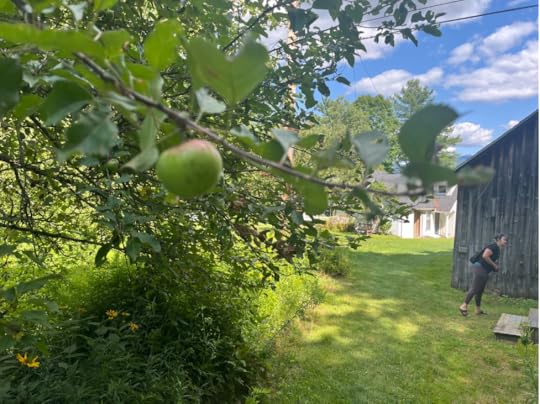
I took this picture of him taking in the view from the porch.

After the tour, we toured the art walk in Franconia and took in more of the beauty of the place before heading to our lodging for the night in The Allard, a building in Whitefield, in the process of being restored and turned into a teashop and a respite for tired hikers.
We traveled on to Bennington, Vermont, the next morning. After having to turn around to retrieve a bag left behind (adding two hours to our already three-hour drive) we saved Shirley Jackson for the morning.
Shirley Jackson wrote whenever and wherever she could, in the nornings and evenings, at the kitchen table among the chaos of a house with four children in the 1950s. She shows all the pampered writers who could only write in solitude (most every writer we’ve come across so far) what’s what. She is most known for her short story “The Lottery” which, even if you haven’t read anything else by her, you probably read in high school. There’s a 2017 biography called A Rather Haunted Life that I just moved up my reading list. Pictured is the inspiration for Jackson’s The Haunting of Hill House: Jennings Hall, at Bennington College. If you haven’t read We’ve Always Lived in the Castle yet, make a cup of tea, put a cookie on a plate, and get down to it.

From Bennington, we drive to the Emily Dickinson Museum in Amherst. The next two tours were all booked, so we made it on for the 1:30. We took the time to stroll Main Avenue and grab lunch at Paradise of India. (Recommended!) I had the vegetarian thali (a little of everything!) and Chris had shrimp tandoori, though it really was a free-for-all, as we like it. The one-hour tour kept us completely captivated. Our guide was knowledgeable, passionate, and did not miss a beat. Here’s a picture of Dickinson’s desk.

It’s the sort of desk you had at the time if you were a lady. And still, she persisted. Dickinson famously never married, and withdrew from society around the age of thirty. We learned this time coincided with the death of her dog, Carlo. No one really knows why she withdrew, but the two theories our guide said had the most support were (1) so she could focus on her writing; and (2) an increase in social anxiety. Not mutually exclusive explanations.
Dickinson wrote daily on any scrap of paper she could find. She stitched some poems together into booklets. She did not publish any poems purposely during her lifetime, but she did send them out through letters to trusted readers, which is how four were published without her consent. Her poems were compact and experimental for the time (slant rhyme, no titles, dashes instead of end stop punctuation). Nature was her muse; she loved to garden. Our guide did point out that her most prolific period was during the time the family hired help. So, in addition to being single, she would have had more time away from chores to write. A lady writer’s dream!
What this reflection has me thinking about is how our creative work can happen any place at all, if we show up for it: at a busy kitchen table, a tiny, cramped desk, looking out from the porch at a stunning view of the White Mountains.
I also work as a writing coach and love helping writers gain confidence, set goals, and develop their work. For more information on coaching, email me at eatyourwords.lizshine@gmail.com.
August 4, 2025
The Living Legend: Literary New England V, plus indie bookstores…
On our way to see Stephen King in Bangor, Maine, we began to notice signs for moose crossing. To my disappointment we did not see a single one of these beasts. We’d mapped to The Stephen King House, a huge Victorian-style mansion with a wrought-iron gate adorned with spiders and bats, plus a huge wood sculpture in the middle of the lawn. It displayed owls, ravens, cats, and a corgi gathered around a bookcase. The grounds were well-kept, but you can’t go inside. And Stephen King doesn’t live there anymore. He has a second home in Florida and plans to turn the Bangor house into a writing retreat and museum. Plenty of people were satisfied simply standing outside his gate for a selfie. One couple we ran into made the pilgrimage annually.

The town seems to miss him, or at least Eric Furry at Pro Libris books does. His store celebrated its 40th anniversary in 2023. Furry owns and runs the shop himself. While we browsed, he told us the story of how he came in possession of eight thousand books from another bookstore owner and friend who he’d met at a bar reading Sylvia Plath, and struck up a conversation. He paid $800 for his starter inventory. He also told us about how he’d taken some business classes in college and had to wrestle his conscience when a dean told him he’d be a business major. He responded by taking more philosophy classes and considering teaching at one point, but didn’t have the right boxes checked to pursue that path without putting in a lot more time. He was working at a B. Dalton store when he came into the aforementioned collection to start his own store. Over time, Eric has come to purchase and renovate a house across the street from the store. He was sitting down to eat his dinner of shrimp cocktail and corn on a TV tray placed in front of a plastic lawn chair in the middle of the store, the perch from which he told us some stories. At one point, his wife called him over to help with something, and he dipped out for a bit but continued where he left off when he returned. All his books were used. It’s a smart collection, well-organized. He only takes cash or checks. (Thank goodness I always keep a couple of checks in my wallet for moments like this.)

Furry has a coffin-shaped bookcase (bearing King’s signature) solely for King books that he admits is hard to keep stocked. Seemingly everyone wants to come to Bangor and buy a Stephen King book. He spoke fondly of a time he saw King at the local tavern (in his drinking days) and how he used to come in with his family to sell used books— “even after he’d gotten pretty famous.”
King writes in the morning and is a defender of routines and writing every day, whether or not the muse is around to help you. He’s not much of an outliner, preferring to put characters and situations in and see where they go. He works on several projects at once. If one stalls, he’ll give it a break for a bit and hop over to another one. He writes fast first drafts, then let’s them settle before getting to the slower task of revision.
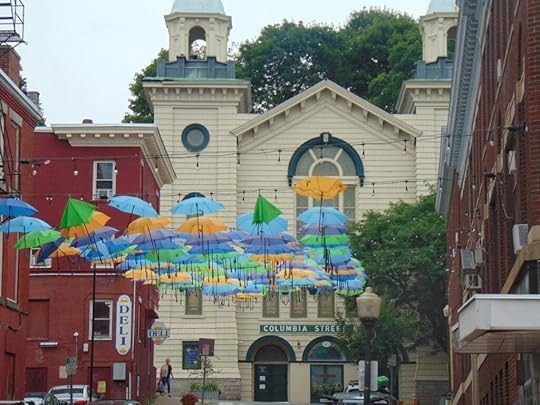
There’s another independent bookstore in town that sells new books. and has a special King bookshelf and literally piles of King and Joe Hill (King’s son) books on the floor in front of the cash register. The store, like the rest of the town, could care less whether it’s showing up as organized and presentable, but it’s hopeful and enthusiastic about books.
I’ve been posting mostly about the writer destinations, but along the way we’ve also stopped in every independent bookstore we could. We’re immersing ourselves in the power and influence of literature in every way possible. Each independent bookstore has its own feel, and most also have themed merchandise. Symposium Books in Providence, Rhode Island, has a “feminist vibe”—Chris’s words—and sells lots of sassy stickers and vegan snacks. You will find books on the shelves that you will not find in the big chain stores. Shopping there, you will be supporting people in your community who have dedicated their lives and staked their financial independence on books. Each bookstore curates their selection so that browsing one is sort of like having a conversation about what matters. This morning I read a deeply moving Substack by Jeannette Winterson about what we can do in the age of pointless concrete pathways. I think that choosing independent bookstores is its own kind of rewilding.
I’ve made a list of the bookstores we’ve visited / will visit (last stop, Boston, today) and added Olympia’s own independent bookstores to the bottom. Most of these place will ship you a book that’s not in, just like Bezos. It’ll take a little longer, but it’s worth it. And let’s be honest—you weren’t going to get to it right away anyway, were you? If you comment on this post, include a link to your own independent bookstores and a little about what you love about them!
The Concord Bookshop (Concord, MA)
Yellow Umbrella Books (Chatham, MA)
Bellow the Brine (Harwich, MA)
Reed Books (Harwich, MA)
Symposium Books (Providence, RI)
Weird Providence (Providence, RI)
Aviary Books (New Bedford, MA)
Pro Libris (Bangor, ME)
The Briar Patch (Bangor, ME)
Print: A Bookstore (Portland, ME)
Carlson Turner Books (Portland, ME)
The Bennington Bookshop (Bennington, VT)
Amherst Books (Amherst, MA)
Wicked Good Books (Salem, MA)
The Harvard Bookshop (Boston, MA)
Grolier Poetry Bookstore (Boston, MA)
Brattle Bookshop (Boston, MA)
Browsers Bookshop (Olympia, WA)
Orca Books Cooperative (Olympia, WA)

August 2, 2025
Kerouac, Whittier, Jewett, Longfellow: Literary Tour of New England IV
Our first stop on the 30th of July would be in Lowell, Massachusetts, to touch base with Jack Kerouac, who both Chris and I had envied at different times in our lives. Chris had his own experience “on the road” when he drove out West from his home on the East Coast after getting his undergraduate degree. I mean, what writer or lover or literature doesn’t at some point come across the beats and fall in love watching the beauty of the best minds of that generation express their madness? Known for his spontaneous style of prose, where he’d get focused and sit at a typewriter and pour out his stories in a gorgeous and poetic stream of consciousness that mesmerizes, Kerouac remains a legend. Stunningly (though contrary to myth), he did revise after the fact. He also rehearsed quite a bit in his head before sitting down for these notoriously caffeine or booze or drug induced bursts of productivity. He aimed create jazz from his work, and leaned on the guidance of Eastern ideas around mindfulness and attention to fuel his creativity. He loved his typewriter, preferring it to longhand. He constantly jotted down notes as he went about his day. He was also a nocturnal writer. Kerouac’s prose was less formal than most writing of the time. It invited new voices to the table by using the language of the street.
Among other things, Lowell is home to old buildings with scattered cobblestone streets, and grime. So much grime. We stopped for breakfast at this coffee shop in Lowell that had great coffee, excellent menu items. I had a Peace, Love, and Happiness Wrap and Chris had a vegan breakfast sandwich. The service was great, but the place didn’t care one bit what you thought of how it looked. Dead plants hung from the ceiling. The floors needed to be refinished twenty years ago. The walls looked they had never been washed.
[image error][image error]We found the Kerouac mural and Kerouac Park. We tried to visit The Jack Kerouac Center but, in exploring their website and researching further, came to understand that it only yet exists in the minds of the planners, namely one country musician Zach Bryan who bought a property in Lowell to host the project in 2022. The future center that has stalled due to funding issues has an honorable mission and will be housed in the church where Kerouac served as an altar boy and where his funeral was held. There is a button on their website linked above, should you feel so moved.
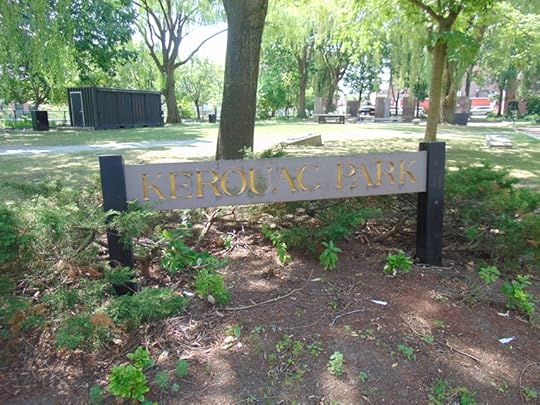
Home to several vagrants, Jack Kerouac Park sat right next to an almost totally dry stream full of debris, including plastic piping and a grocery cart. In the park proper, there stood huge marble slabs with passages from Kerouac’s works that we struggled to read due to moss growing into the engraved words.
Feeling a little grimy, anticipating the promised mid-90s heat of the day already coming on, we spent the first part of the next leg of our drive in silence. For myself I can say that I needed a moment to take it all in. So much of our visit to New England had been neat little towns and registered historical houses and volunteer docents, quite unlike what we’d seen in Lowell. Even when Kerouac lived there, Lowell was an industrial city in decline. And yet, there are murals all over the place, and creativity seems ready to sprout from the sidewalks. Maybe that’s a bit of magical thinking on my part. It left me in stunned silence for a beat.
We traveled on and visited two writers in two different towns where the stop really consisted of standing outside old houses and taking pictures. We also read bits of their works and talked about them.
The first of those two writers was John Greenleaf Whittier in Amesbury, Massachusetts. Whittier was a quaker and abolitionist who believed in the power of poetry to change hearts and minds. We read two of Whittier’s works sitting outside The John Greenleaf Whittier Home and Museum (only open Saturdays; we were there Wednesday). We read “Snow-Bound” and “The Barefoot Boy” and noticed the parts we admired: the rhythm and rhyme, the potent imagery, the choice of a single word. He was one of the most popular poets of the nineteenth century but continued to live simply and modestly with the goal of poetry as activism.

The second stop was the Sarah Orne Jewett House in South Berwick, Maine. Jewett is known for her character-driven, regionalist fiction. Right away, I wondered whether she’d had an influence on my favorite living writer from Maine, Elizabeth Strout. So, I looked it up. Nope, not one mention of the name. Only Updike, Turgenev, Trevor, and Munro. We parked behind a car with a Save America Again Trump bumper sticker, parked across from the quaintest marijuana shop one could ever imagine. More on marijuana and coffee shops in Mainw in a future post!

This being a Thursday, according to the website, the house should have been open for tours on the hour. No such luck. So, we traveled on, and I read aloud “The White Heron” as we headed to Portland. It’s a story whose feminism sneaks up on you, about a curious young girl who becomes enamored with a visiting young ornithologist/taxidermist in search of an elusive white heron. I won’t give it away; you’ll just have to read it. Another morning writer (so far, the early risers are outnumbering the night owls), Jewett found a mentor in William Dean Howells. Letter writing, for her (like so many others) was an extension of her creative practice. She preferred to write only when inspired and not to force the work.

Our final destination was Portland, Maine. We landed at the Wadsworth-Longfellow House with a couple of hours to spare. The tour was self-guided but there was a docent on each floor happy to answer any questions we had (or didn’t even yet know we had). According to the second-floor docent, Longfellow’s popularity might be compared to the level of Stephen King today. He enjoyed huge financial success. His good friend and mentor Nathaniel Hawthorne, less so. Perhaps it was the randomness of how fame is meted out to writers that inspired Longfellow to write a check to the Hawthorne’s widow every month after Hawthorne’s death.

One of the most popular poets of the nineteenth century, Longfellow rose early and did not wait for inspiration to strike. He showed up to write whether compelled to or not. He wrote longhand, with a quill pen. His poems were narrative, and sometimes historical. He understood and sought to appeal to his audience. He maintained correspondences with Hawthorne and Charles Dickens, among other writers. We’ve left the age of letter correspondence, and I wonder now as I have many times before what we left behind. I love, love, love a good letter. But it’s not the pace at which our world of read receipts moves.
The second-floor docent encouraged us to make our next and last stop be Print: A Bookstore, and that it would not disappoint. The store, he said, was owned by the daughter of Rick Russo, which took us a beat to figure out who he meant, since as mere readers we only knew him as Richard. He listed some other Portland writers we should check out, including Elizabeth Strout. We ended the day with a trip to a bookstore and a recommended and longed-for lobster roll spot before we made a stop at the Portland Co-Op for provisions (including lemon fennel ice cream and a raspberry rhubarb hand pie for dessert), then checked in at our cozy downtown Airbnb.
A whirlwind of a day, thinking about writers and their habits and influence, what drove them, what made them popular or not. Thinking also about how these places bear the mark of those who once wrote there, as their works reflect place and time in a reciprocity that leads to historically registered houses, parks, murals, bookstores, statues, and museums yet to come.
I also work as a writing coach and love helping writers gain confidence, set goals, and develop their work. For more information on coaching, email me at eatyourwords.lizshine@gmail.com.
August 1, 2025
Lovecraft, Melville, and Douglas: Providence, RI to New Bedford, MA: Literary New England III
On our way to Providence, Rhode Island, to find a shrine to Lovecraft, we got informed we might touch base with Poe as well. That turned out to be false, though Poe did visit Providence a few times and was a huge influence on Lovecraft.
The day we crossed the India Point Park Bridge into Providence around noon, temps had already crept into the 90s. We sought out a place called Lovecraft Arts and Sciences. It turned out to be just a bookstore called Weird Providence, in a building called The Arcade, that must have been really something at one time since it had its own parking garage but currently hosts only a few little shops with filmy windows. The only other people we saw enter the building were a homeless man with an injured foot looking for food money and a goth-bedazzled family (also looking for Lovecraft Arts and Sciences). The inside of the building had vaulted ceilings with lots of natural light. The walkway between the shops was narrow and stiflingly hot.
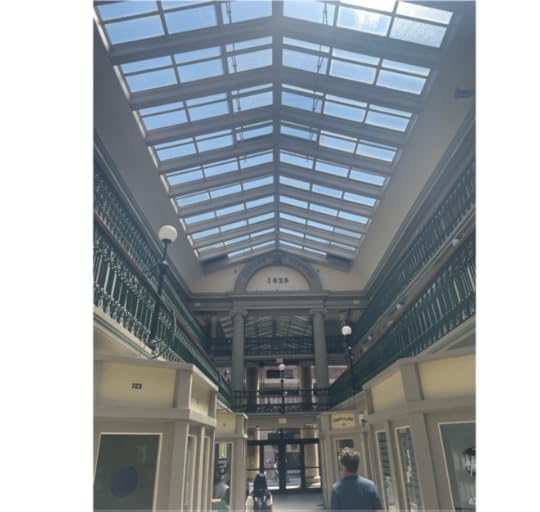
Weird Providence housed loads of uncanny reading material, and employed two of the most chatty, friendly bookshop employees I’ve ever seen. While Chris and I browsed the shelves, they chatted on and on in a high enthusiasm register about all sorts of things, without a cellphone in sight.
Inspired by Poe, Lovecraft emphasized mood over action. Like Poe, he was a nocturnal writer, which I thought about as I browsed the store. I’m a morning/daytime writer—always have been. I’m also working right now on a project that stretches my style a bit into the uncanny. It’s a book I haven’t started writing yet, but I am pre-writing it in my head as I work on editing another book. What if I wrote in the evenings sometimes? How would that influence my work? I came across a writing prompt from Kelly Link (another uncanny writer whose books graced the shelves at Weird Providence) in Poets and Writers some months back, about the practice of full moon writing. Maybe?
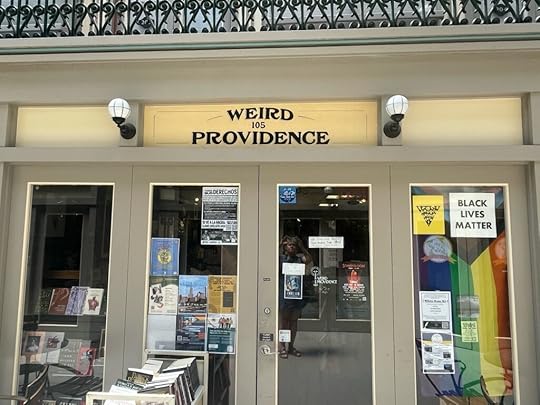
Lovecraft kept a dream journal, and many of his stories were based on nightmares. He meticulously outlined his works (A plotter!) and was a world-builder. He wrote over 90,000 letters in his lifetime. He took a scholarly approach to his exploration of questions about the universe.
In the end, we decided that we had gotten all we needed from this one weird little bookstore before heading on to New Bedford, Massachusetts. I bought a collection of Lispector stories and Chris bought a Lovecraft anthology. The two clerks checked us out and chatted us up, lingering in my mind as perhaps the uncanniest part of our Lovecraft adventure.
In New Bedford, we went first to Seaman’s Bethel, mostly a shrine to all the men over the years who’ve been lost at sea. It also pays homage to Melville, in particular to his now famous Moby-Dick that failed commercially in his lifetime.
Melville wrote in the mornings at a stand-up desk and became emotionally invested in his works. Another letter writer, he wrote to process the emotional ups and downs of this work of writing. This is a common theme among the writers we’ve visited. It isn’t unlike what I am doing here, writing to all of you, and makes me think in general about the parts of our practice that help us process the burden of this work. Melville read voraciously and (like me) cared not a whit about keeping the margins of books tidy. This practice is also a kind of correspondence. Reading inspires an inner dialogue with the author. The material and the practice of marginalia is one way to process those conversations. It’s at the heart of Maria Popova’s wonderful newsletter, The Marginalian. Perhaps the central motif of the life Chris and I are making together is our shared belief in the power of books to better understand and transform the self. Though I’ve only mentioned a few here, our trip has also taken us into every independent bookstore we come across. As I said to Chris a couple of days ago, “We will leave no bookstore unturned.”[image error]
Moby-Dick is a book so many of us aspire to read or reread. Its allegorical nature evokes a deep conversation with ourselves. It’s a flex to say you’ve read it, let’s be honest. It seems that allegorical nature was inspired by the works of Hawthorne, who Melville admired. The lack of commercial success of Moby-Dick drove Melville to work in poetry later in life, they say. I’m not sure why that makes sense, but it kind of does. A novel is a beast to sustain. Not that poetry is easy, but it can be held more completely in the imagination in the making.
In a whirlwind of a day, our last stop in New Beford was the Nathan and Polly Johnson House and the park dedicated to Frederick Douglass [CH1] and the house of abolition across the street. New Bedford was an abolitionist hotspot. Chris and I have not finished the most recent Douglass biography yet, but we got a good start. It was enough of a start to know that even before visiting this place, what I was taught about Frederick Douglass in school wasn’t exactly wrong, but it wasn’t right, either. He was indeed a slave who taught himself to read, and escaped slavery. But he was not a rare miracle. He is a miracle, don’t get me wrong. But his work was bolstered by a vast network of activists and intellectuals, black and white, also pushing for the cause of abolition. Why is this important? Black intellect and black power are more rule than exception. And that matters.
[image error]
Not surprisingly, Douglass’ writing focused more on clarity and argument over style. His writing often originated from speeches and shows the marks of that rhetorical style: parallelism, direct address, biblical allusions, and irony. His work was urgent and morally driven.
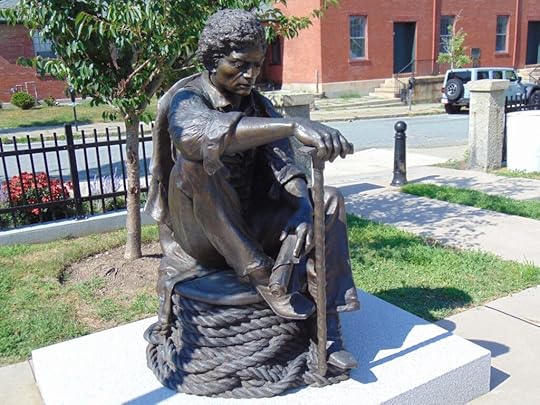
As this day came to a close, I found myself thinking about how a writer’s purpose shapes their work and how knowing that, we can then shape our creative habits to align with our goals. Maybe today is a day to pause and take stock of what you are doing this work for. Maybe today is the day to get curious about what habits or routines might move you in new directions. (Full moon writing, anyone?)
Maybe it’s time to start a dream journal, or consider work at a stand-up desk.
July 29, 2025
Literary Tour of New England II: Walden Pond and Concord
Cited as an influence on Martin Luther King Jr. and Ghandi and mentored himself by Ralph Waldo Emerson, Henry David Thoreau is a household name (whether you’ve read him or not). One truth that pops for me in this reflection after our visit to Concord and Walden Pond is the power of influence. The intertextuality of literature. When you start to weave the connections between works of great writers and their influences, you see a kind of string art around particular themes. Thoreau’s famous Walden begins with the essay “Economy.” It opens thus: “When I wrote the following pages, or rather the bulk of them, I lived alone, in the woods, a mile from any neighbor, in a house which I had built myself, on the shore of Walden Pond, in Concord, Massachusetts, and earned my living by the labor of my hands only. I lived there two years and two months. At present I am a sojourner in civilized life again.”
On our way to Walden Pond, we came across a replica of that little house. I’m not sure if they made it true to size. If so, emphasis on the little! It’s the tiniest of tiny houses. But let me back up a little bit to the prior afternoon, when we first went to visit the pond.
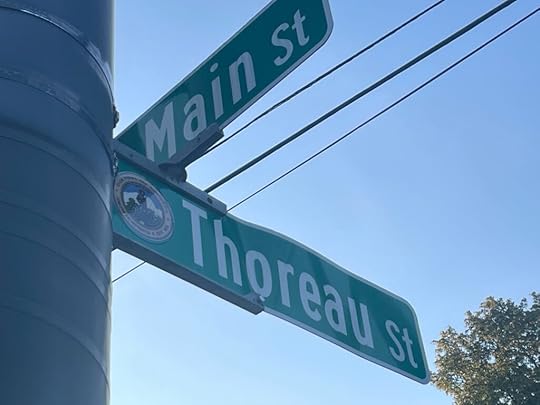
We rolled into Concord in hopes of going right to the pond where Thoreau famously walked. He wrote in the mornings while his mind was fresh, then spent afternoons walking and observing nature. (Generating creativity!) He kept a journal, his most prized possession that he kept locked up when out exploring. He meticulously edited his work before publishing, so he might be mortified to know that since his death his journals have been published in their entirety in fourteen volumes and over two million words. Thoreau saw writing primarily as a spiritual act. In 1849, he paid for the printing of Concord and Merrimack Rivers himself. So, if you are thinking about self-publishing (and worried about the credibility of such a move), maybe read an essay or two from Thoreau before you completely toss the idea aside.
I admit I expected a quiet, pristine, secluded lake. Naïve, I guess. We found a pond closed early for the day due to already being at capacity by mid-afternoon. We did see one man with a towel over his shoulder dart across four lanes of state highway and run through the woods to get in. It was a sight I will never forget, seemingly right in the vein of the self-reliance and civil disobedience Thoreau championed. Our plans foiled, we headed into the town of Concord to look around and have dinner. We made a new plan to wake early and take in this Transcendentalist stomping ground before heading off to Cape Cod to spend some days with family.

Walking through downtown, we noticed the stamp of Thoreau everywhere. Chris cringed at a store called something like Thoreauly Perfect. We went on a walk up to Thoreau Street so I could take a picture of the sign, when I spied a sight worthy of a nature essay: a hawk with its kill on the lawn of a stately colonial, the front porch piled with Amazon packages.

I don’t know if it’s a fact, but it seems to me that without Thoreau there might not have been an Annie Dillard (one of my favorite writers). The way we have embraced his close observations of nature as philosophical inquiry, the ubiquity of some of his most famous lines (Simplify! Simplify!) seems to me to have paved a way for an entire genre of creative non-fiction. (Hello, Wendell Berry!)
Speaking of intertextuality, Thoreau drew heavily on Greek and Hindu mythology, in particular the Bhagavad Gita. Whitman and Emerson also reach out toward Arjuna’s epic journey in their works. At seventeen, I’d been making attempts to practice yoga for a couple of years when I first fell in love with Whitman. That was the year I carried a hardbound, gold-trimmed book in my shoulder bag everywhere I went, and could often be found at night, reading poetry and smoking cigarettes with friends at the cemetery. That’s how intertextuality works in our imaginations. We pick up one book that leads to (or refers to) another, repeat this over and over again, as we return books for our own self-inquiry. In this way, the works become a collage in memory and experience.
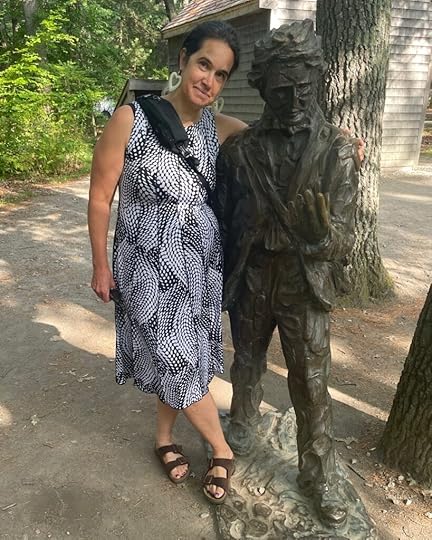
Our next morning plan worked perfectly. We grabbed coffee and a breakfast sammie at a local bakery, then headed over to the Concord bookshop where I bought some notecards and a map of New England. We made it to Walden Pond and walked for a while on the path around the lake. It was late morning, already warm, and swimmers were making their way into the water. Many of them appeared to be aiming for a lake crossing as evidenced by little flotation devices tied to backs to bolster the swim.
I’m not sure what I’m looking for in this literary tour of New England. I know I’m visiting the homes and museums and gravesites of different writers. I’m curious what I can learn about how they wrote in particular, since that is what I am concerned with here on Make Time: this practice, how we nurture it, how we shift when things get stuck or stale. I’m also a morning writer, who leans on walking and close observation of nature for inspiration. But one of the things that’s starting to arise as a theme for me is the wealth of possibilities and iterations for doing this work.

Literary Tour of New England I: The Twain House
You can’t tour the home alone, and you can’t touch anything. but for a small fee ($28), you can go on a guided tour of the house where Mark Twain lived for much of his life in Hartford, Connecticut. For an additional three dollars, you can take the living history tour. We were happy with our enthusiastic and knowledgeable guide.
We arrived around 12:30 and paid for the 2 o’clock tour. In the meantime, we browsed the main building museums and went to the café for a snack (we were starving). There was one vegetarian option: a poorly-dressed limp kale Caesar salad. I balanced out the disappointment with a Huckleberry float, made with (of course) vanilla ice cream and a bottle of huckleberry soda, bearing a hands-on-hips Huck Finn on the label. We sat at the outdoor tables and admired the impressive gardens. We noted a group coming through with a tour guide dressed in a tux, yelling loudly in a southern accent while they followed his lead a little sheepish-looking.
Our small group stepped up onto a massive wrap-around porch. The guide explained how Twain would sit there at the end of his writing day and read aloud to the neighborhood kids. That ritual of reading what he’d written in a day to his family or his neighbors was a core habit.
His house sat on the banks of a small, smelly river called the Park River. Due to frequent flooding, the decision to bury the river underground began in the 1940s. Today, when you visit the Twain House, you must stand on his porch or look out the window in his upstairs writing room and imagine a river there. Our guide conjectured that perhaps Twain settled in Hartford because it was the home of his primary publishing house, The American Publishing Company.
Twain married Olivia Langdon, whose inheritance provided them the money to build the impressive three-story building and additional carriage house on this plot of land. It was also the home of other literary friends, including Harriet Beecher Stowe, fellow abolitionist and friend.
Twain wrote on the floor of his huge, carefully decorated house in his billiards room. Though I have no pictures of the ornate interior (since inside the house is a no photography area), you’ll have to trust me that every room had plenty of eye candy: carpets, wallpaper, chandeliers, statues, ornate wood-carved furniture and beams. He wrote in this room, though he chose to write not at his writing desk (facing the billiards table), but instead tucked into a corner of the room, facing the wall, to shut out distractions. According to our guide, he wrote must of The Adventures of Huckleberry Finn in that corner. He also described how at one point he got stuck and put the book away in a paper cubby for six years. A good reminder to all of us that no one is spared from the challenges of writing a novel.
He had two kids (one son that died at 18 months) and a sickly wife, but still enjoyed the luxury of shutting himself in his study to write all day, thanks I’m sure to the staff of seven servants that attended the family. The family knew not to come near his study but had a horn they could blow to alert him if they absolutely needed him for something.
These kinds of stories can be discouraging for those of us trying to do our creative work without privileges and supports. That’s a problem with focusing on our own limitations. That’s what we see. Looked at from another angle? The poor guy did not have word processing, though he would have loved to. His side hustle was inventions, and he was close friends with Nikola Tesla, and even worked in his laboratory. When we look for possibilities, we see a dedication to craft so strong that he was willing put himself in a corner so he could focus. He worked all day and then read his work out loud to test its worth on his readers. Though he got stuck, he persisted. Twain believed in the power of revision, and embraced the work of rewriting. He understood that the real payoff comes in the refinement. He was a bit of a ‘style cop’ who campaigned for the precise and perfect word, and did not care for adjectives. He famously aimed for what we call realism. I’ve often blamed Hemingway for the cold, clean American style that still dominates today, but Twain paved the way. Both had been journalists, trained in precision, accuracy, and “truth.”
Twain wrote in a time when early death by illness was much more probable, and the cultural awareness of death showed up everywhere. In one of the rooms, the wallpaper was this gold-accented pattern of lively buzzing bees. But a closer look reveals how the ceiling the pattern changes to spider webs, with dead bees trapped in them. Another painting of children playing that looked at from another angle is a skull. This artistic expression of the awareness of death was common at the time, our guide explained.
The aspect of Twain’s ritual that struck me as most remarkable was the habit of reading his work aloud to gauge reader reaction at the end of every workday, particularly the strong sense of confidence in his own voice that required. He trusted those responses more than he trusted critics. I had a colleague say to me recently when complimenting my recently published poem that she admired my “ability to share openly with other people.” I suppose that to do this work, we must be willing to do just that.
If you haven’t already joined a group of others who do the creative work you do to share and give feedback, or you haven’t found a few close friends to regularly give feedback, maybe it’s time to consider doing just that. Just after this Twain house tour, I attended a three-day yoga retreat at Kripalu in Stockbridge, Massachusetts. In a divination workshop, I was asked to pose a question and draw a card from the deck. I asked: What do I need to know to move forward with my writing this summer and beyond? The card I drew from this deck of divining trees and shrubs was heather, which represented community and connection. That’s my big takeaway from visiting Twain’s house. When it comes to revision, embrace your inner realist, and apply yourself relentlessly to the task, and lean on your community for support and feedback.
I also work as a writing coach and love helping writers gain confidence, set goals, and develop their work. For more information on coaching, email me at eatyourwords.lizshine@gmail.com.
July 17, 2025
Staying Curious
Last Tuesday, the word that landed in my inbox from Wordsmith was questionary. For reasons I can’t explain well, I began drafting this post. Very often, that’s how the ideas I write about here—about how to persist in cultivating your creative life—take form. I do have a list of topics I’d like to write about, but most of the time ideas just drop in on me. When this happens, the urge to write them down is fierce. I am recording these for myself as much as I am making offerings to you, dear readers.
There was just something about the word, how it evoked a quest, as well as questions for my own experience of having just sat down to hammer out another chapter of my novel. Trying to write that morning, I kept asking myself question after question after question, to come up with scenes that felt right. In essence, that’s what revision looks like: a list of questions (questionary) and the resiliency to keep answering them as skillfully and honestly as one can.
On the other hand, there is a whole list of questions that block us from the work that matters.
Will I ever be published?
Why do I even try, when there are plenty of writers in the world who can do this?
These questions that persist from fear and self-doubt present a universal struggle for the artist.
Why do I even do this work?
Is this just me giving in to “hustle culture”?
If I gave up now, I could take more naps?
Every time we encounter a challenge, these questions can roar louder if we let them.
But what if you answered back with more questions? Better questions, questions that assumed your worth, your goodness, your right to take up space?
Let’s try it.
Who cares?
So what if you are only doing this work for yourself, to get better at your craft. Isn’t that enough?
Do you remember how it felt the last time you created something you felt proud of? Take these posts for example. There are lots of times that I write these posts, and I don’t know whether or not they land. But then, getting changed before yoga class last night, a woman I know who I had forgotten reads these, says to me thank you (meaning for writing these posts). She followed it up by saying that she was “getting closer.” I didn’t push her to elaborate on that (though I was curious). Whatever she was getting closer to I knew that it involved making time. Next time I see her, I want to ask what it is she wants to make time for. The point is that she reminded me of what I am writing for. I am writing so that someone might read this and decide to take up the work of their heart. I’m also reminding myself why I keep taking up this work.
What if we all did that? What if every single person you knew took up the art that fascinates them? From time to time in education, people take up the call to change our education system to be more career-focused, instead of making kids take subjects they are not interested in or that don’t fit their future career goal. I find this idea terrifying. Are we not already divided enough in our narratives of us versus them? Shouldn’t every single person encounter ways of thinking and seeing that challenge and baffle them at first? Isn’t that one way to empathy? The idea that young people have enough experience to make narrow decisions like that is more than a little naive. The real conversation ought to be about how grading kills curiosity, not eliminating subjects which can potentially foster it.
What if we all made time for the work of our hearts, just because we could?
Where does all that effort lead? You’ll never know if you don’t try. Does it even matter where you go?
When will I master this? Hopefully never. Can you imagine how boring it would all be without the struggle, without the writing and rewriting, the shaping and reshaping? The idea of mastery is a false quest perpetuated by our education system in order to provide some measurement for grading. The very idea of mastery can stunt your growth. What happens after mastery?
Why not? All the reasons you can conjure up as reasons you shouldn’t make time for your art are fundamentally unsound. You do have time, no matter your skill level. Praise for your art is nice, but it’s not the point. There are not enough artists in the world, not nearly enough. We need art filling up public spaces and the public imagination more than ever.
How might I make this work for me? There is no one way. No singular path, and no rules. You get to design and redesign your life and your spaces to accommodate what your practice looks like now. And just as your yoga teacher might remind you to take each pose in the present moment and consider what your body needs now (not what it needed yesterday), you should do the same for your creative work, and be open to adjusting and readjusting your practice.
The next time you get stopped in your tracks by a fear-driven question, talk right back with a better question.
I also work as a writing coach and love helping writers gain confidence, set goals, and develop their work. For more information on coaching, email me at eatyourwords.lizshine@gmail.com.



